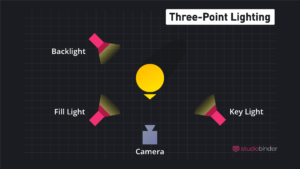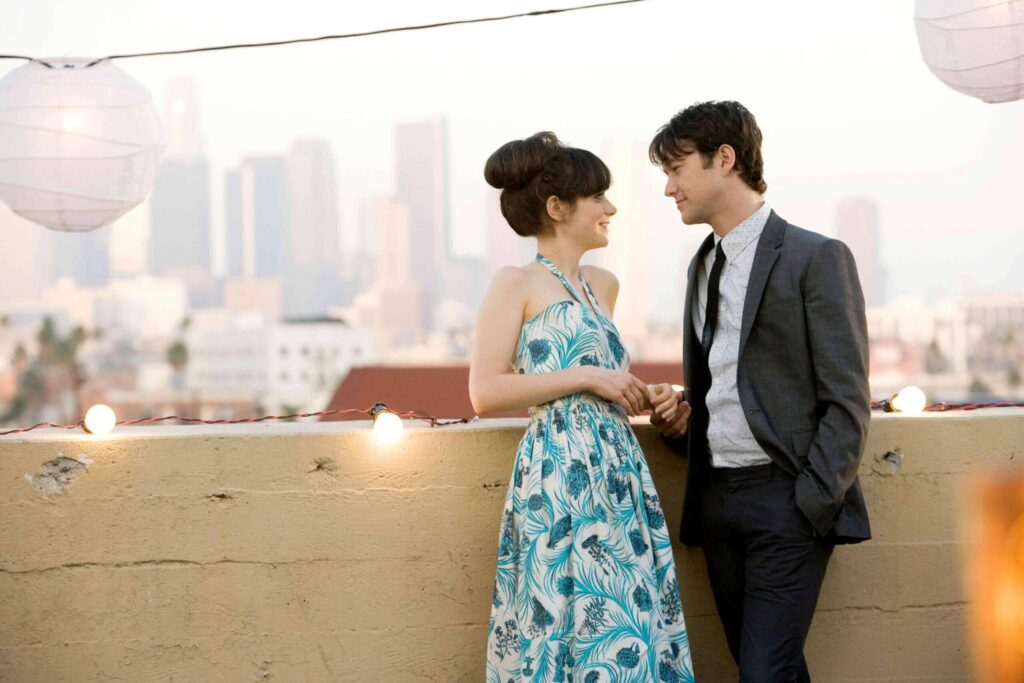Imagine a movie scene – bright and sunny, or dark and suspenseful? Lighting is the secret sauce that shapes the entire mood. The key player in this equation? The key light. It casts the main illumination on your subject, dramatically impacting the look and feel of the shot.
Get ready to dive deep! We’ll explore how cinematographers wield the power of the key light to craft unique visuals and build captivating worlds on screen.
– First, Let’s define key light
The key light is the star of the show in any lighting setup. It’s the main source of illumination, and its strength, color, and angle all play a crucial role in how the cinematographer sets the mood. Typically, the key light sits in front of the subject, at an angle, highlighting a specific area.
But the story doesn’t end there! The overall lighting style, whether dark and moody (low-key), balanced (medium-key), or bright and airy (high-key), depends on how the cinematographer uses fill lights. These fill lights tackle the shadows cast by the key light, revealing more detail on the subject.
Methods to Manipulate a Key Light:
- 01 Diffuse the light for softer lighting.
- 02 Bounce the light off a wall or bounce board to create a softer light spread.
- 03 Moving the light further from a subject will create harsh shadows.
- 04 Adjust the angle of the light to achieve different looks.
What is the purpose of a key light?
The key light works as the main source of exposure for a cinematographer. Key light photography is critical to properly exposing and highlighting the shapes, dimensions, and forms of a subject and atmosphere that appear on screen.
How a gaffer or cinematographer chooses to manipulate or complement this primary light will determine the overall mood of a shot.
There are various film lighting techniques within key light photography that cinematographers utilize to achieve different looks. Commonly, a key light is used in a three-point lighting setup to create cinematic looks.

In this video, we break down how a key light is used with a fill light and back light to create a cinematic three-point lighting setup.
The three-point lighting setup is one of the most fundamental lighting techniques to learn. It utilizes key light photography in relation to a fill light and backlight. Understanding the relationship between the three and how to tweak your setup will enable you to create different moods.
The three-point lighting setup, however, is not the only setup cinematographers may use. In addition to the foundational elements of a three-point lighting setup covered in the video, the best cinematographers manipulate other components for different effects.
Some of these components that can be tweaked are the light’s color temperature, the angle of the light, the distance of the light from the subject, diffusion of the light, or strength of the light in a set up.
What kind of lighting styles do DPs create from tweaking these elements? Let’s analyze a few fundamental styles that can be found throughout cinema.
LIGHTING FOR DRAMA AND THRILLERS
Low-key lighting
Low-key lighting relies on harsh shadows and high contrast, otherwise known as chiaroscuro lighting. In this setup, shadows and deep blacks are more predominant than mid-tones and transitions between highlights and shadows are harsh. For more, watch our video on this lighting style.
The overall effect of a low-key light setup is on the mood of a scene. This type of lighting is typically used in thrillers, horrors, or dark dramas that have a more serious tone. Another style to use low-key lighting is Rembrandt lighting, where fill light is used minimally to allow the contrast on the face.
KEY LIGHT PHOTOGRAPHY FOR COMEDIES
High-key lighting
On the other side of the lighting spectrum, we have high-key lighting in film. This is much softer lit and brighter compared to low-key lighting. It has minimal shadows, less contrast, and more highlights.
Take for example this shot from 500 Days of Summer. The frame is bright, full of highlights, and has almost no shadows or contrast.

The key light in this setup is typically diffused to allow for a wider spread exposure and softer lighting style. High-key lighting in film is used to create a cheerful, optimistic, and up-beat mood that can typically be found in comedies, sitcoms, or rom-coms.
Both low-key lighting and high-key lighting are defined by the contrast or lack thereof created in a shot from the use of a fill light and a key light. Both, however, require any filmmaker to determine the source of their key light.
KEY LIGHT SETUP WITHOUT EQUIPMENT
Natural Key Lighting
Even filmmakers who lack the best video lighting kits have access to one of the strongest key lights in the world: the sun. Natural key lighting in film utilizes natural light sources as a scene’s key light. Key light photography for exteriors often utilizes the sun as the source.
The sun is quite literally the biggest light source a cinematographer can use and it enables filmmakers to create cinematic shots with minimal to no lighting equipment. Natural light is also a key component of shooting any daytime exterior shots.
There are downsides, however, to using the sun as a natural key light. The sun may lead to overexposed shots if shooting midday or close to high noon. The quality of the sunlight can also be inconsistent due to its dependence on the weather. There are a few techniques that can help cinematographers utilize the sun as a key light.
Even filmmakers who lack the best video lighting kits have access to one of the strongest key lights in the world: the sun. Natural key lighting in film utilizes natural light sources as a scene’s key light. Key light photography for exteriors often utilizes the sun as the source.
The sun is quite literally the biggest light source a cinematographer can use and it enables filmmakers to create cinematic shots with minimal to no lighting equipment. Natural light is also a key component of shooting any daytime exterior shots.
There are downsides, however, to using the sun as a natural key light. The sun may lead to overexposed shots if shooting midday or close to high noon. The quality of the sunlight can also be inconsistent due to its dependence on the weather. There are a few techniques that can help cinematographers utilize the sun as a key light.
The most cinematic technique is shooting at the first four hours of sunrise or last hour of daylight also known as golden hour. Shooting at golden hour allows for a much softer more diffused light that utilizes the sun as a key light. Cinematographer’s typically use this for cinematic natural lighting, silhouettes, or lens flares.
Motivated lighting
Motivated lighting in film uses a controlled lighting setup to accentuate or mimic natural light sources. It is important for any cinematographer or gaffer to establish what the motivation for a light is in any scene.
The motivation may be the sunlight throughout a window, a practical light such as a lamp, or even the light from a candle. Give the video a watch and take note of the plenty of techniques that can be adapted to cinematography.
When a light is not motivated and only serves to expose a subject, it can often be distracting for an audience and look un-cinematic. A motivated light allows a shot to visually make sense to an audience and contribute to a more immersive experience into the film.
Although Deakins has said himself that he does not identify with a cinematography style, his goal in creating a believable and immersive world is achieved through using creatively motivated light sources.
No matter what kind of lighting style you choose, it is always important to understand the fundamental utility of a key light. Whether you have extensive lighting equipment, are working solely with practicals, or even just natural light, go out and shoot to put these techniques to the test.
Here is some parting advice and cinematography tips from Mr. Deakins.




